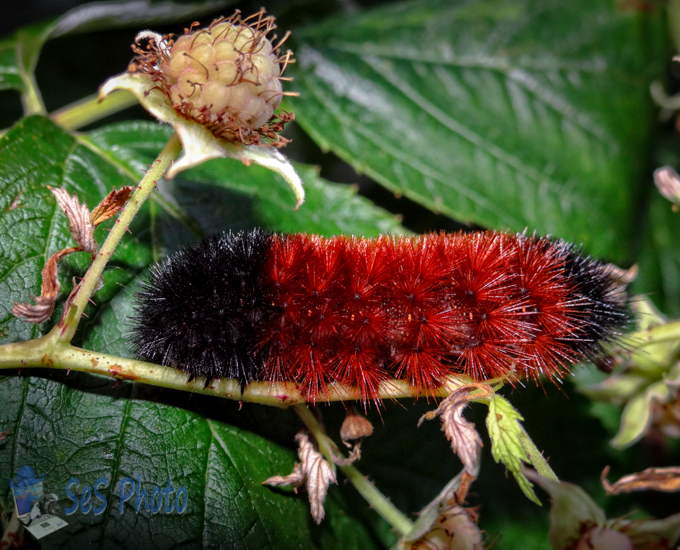The critters and creatures have been after my raspberries like the deer eating the plants, chipmunks stuffing their cheeks with berries, picnic beetles chewing holes in the berries but this evening I found a different creature eating a ripe berry. By the time I got my camera, the caterpillar had moved off the berry and tried to look innocent of eating my berries.
The folklore is that the Banded Woolly Bear can predict how bad winter will be and woolly bears with a wide rusty band means a mild winter whereas more black means a harsh winter. And I have seen several all black ones this fall so that is not a good prediction but at least my berry eating caterpillar has a more positive outlook.
But actually the bands tell how the prior season was, as the caterpillar has to molt when its skin becomes too tight as it eats vegetation, and with each new molt, an additional orangish-brown segment is added to the exoskeleton so younger woolly bears have a shorter rusty band. So if prior winter was short with an early spring, the caterpillars emerged earlier and had more time to grow and have more molts and have a wider band.
If the caterpillar endures wetter weather, more black setae are produced and we definitely had a wet fall so that could explain the all black ones I seen.
But even though the woolly bear coloring is based on last years winter, informal research since the 1940’s has determined that the folklore of the woolly bear caterpillar’s coloring has been right 70 percent of the time which is probably better than the meteorologists with all their fancy equipment and computer models.
Raspberry Eating Woolly Bear


